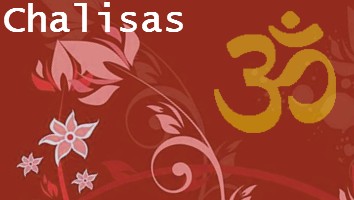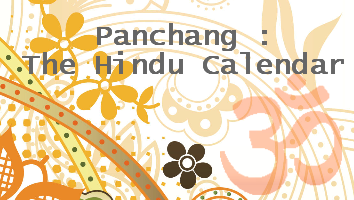The word "Jain" is derived from the Sanskrit word jina, meaning "conqueror" or "victory." Thus, Jainism is the religion of the "victorious one" - any human being who by his or her own effort has conquered the lower passions and thus become free of attachments to any materialistic things.
Jainism stresses spiritual independence and equality of all life with particular emphasis on non-violence. Its purpose is attainment od self-perfection by the gradual abandoment of the material world. At the heart Jain religion is based on the belief of "Ahimsa" (Non-violence), which demands no living creature should be hurt and must help each other.
History of Jainism
Scholars of religion generally hold that, Jainism was born in India in the beginning of 7th�5th century bce. It was a time and place of religious renewal, in which several groups reacted against the formalized rituals and hierarchical organization of traditional Hinduism, desiring something new and fresh. Along with Hinduism and Buddhism, it is one of the three most ancient Indian religious traditions still in existence.
Most Jains believe that their faith was founded by the twenty-four Tithankaras (Ford makers; teachers), who, through austerity, conquered their minds, bodies and passions to attain deliverance from the endless cycle of birth.
Tithankara: means a teacher who 'ford maker' i.e. who shows the way. Other religions call such a person a 'prophet'.
Most important development of Jainism was Vardhamana (c. 599-c. 527 B.C.E.), the 24th and last Tirthankara, who was later known by the name of "Mahavira."
Mahavira is regarded as the man who gave Jainism its present-day form. From the moment of his renunciation, he went naked and is held to have no concern for sleep, cleanliness, food, or water. By imitating his life and through the eradication of all bonds from the materialistic world. Jain monks and nun's wish to follow him to liberation.
Mahavira articulated the primary principle's of Jainism - Ahimsa (non-violence), Satya (thruthfulness), Asteya (nonstealing), Brahamcharya (chastity), and Aparigraha (nonpossession).
Mahavira had 11 disciples (called ganadharas), all of whom were originally Brahmans. Two of these disciples, Indrabhuti Gautama and Sudharman, both of whom survived Mahavira, are regarded as the founders of the historical Jain monastic community, and a third, Jambu, is believed to be the last person of the current age to gain enlightenment. Mahavira is believed to have died at Pavapuri, near modern Patna.
Jain sects
There are two main sects in Jainism, a division which arose out of the issue of whether clothing was excessive for a ascetic, the Shvetambaras (waer white clothes) and the Digambaras (unclothed or go naked). Each subsequently sub-divided into a number of sectarian bodies. This division in the Jain community arose around 5th century B.C.E. and became formal around 3rd century B.C.E.
Shvetambara:
Shvetambara, (White-robed, or White-clad) is one of the two main sects of Jainism. The monks and nuns of the Shvetambara sect wear simple white garments. which sets it apart from Digambara ("sky clad"), whose ascetic practitioners wear no clothes.
Shvetambara, unlike Digambaras, do not believe that ascetics must practice nudity, or that women are unable to obtain moksha. They emphasize that Parshvanath (the tirthankara, prior to Mahira), wore white robes, and Mahavira did not become ascetic until his parents died and fulfilled his necessary family duties.
They believe that the words of Mahavira were not lost and may be found in 11 surviving Angas of the Jain Canon. Today, the Shvetambaras are primarily found in the states of Gujarat and Rajisthan.
Digambara:
Digambara (sky clad, i.e., naked) is the other of the two main sects of Jainism. The male ascetics of the Digambaras shun all property and wear no clothes. They believe that nudity is integral part of the teachings of Mahavira. Digambara monks are not allowed any possessions, not even begging bowls and so can only receive gifts in their cupped hands. Digambaras believe that women cannot achieve liberation , as women cannot live a truly ascetic life, because they have to possess clothes since it is impractical for them to live naked.
They believe that the words of Mahavira reputedly contained in the 11 Angas of the Jain Canon, were lost forever at the end of the 4th century B.C.E. , which led Jain's to write the rest of their scriptures.
Today, the Digambaras are primarily found in the southern parts of India, especially in the state of Mysore.
The 24 Jain Tirthankaras:
The Jain's recognize twenty-four tirthankaras, also known as "Fordmakers", as their historical teachers. It is believed that as great omniscient teachers, Tirthankaras accomplished the highest spiritual goal of existence and then teach others how to achieve it.
List of 24 Tirthankaras:
- Rishabha (Adinath)
- Ajitnath
- Sambhavanath
- Abhinandannath
- Sumatinath
- Padmabrabha
- Suparshvanath
- Chandraprabha
- Pushpadanta (Suvidhinatha)
- Shiatnath
- Shreyansanath
- Vasupujya
- Vimalnath
- Anantnath
- Dharmanath
- Shantinath
- Kunthunath
- Aranath
- Malinath
- Munisuvrata
- Nami Natha
- Neminatha
- Parsva Natha
- Mahavira (Vardhamana)


 Collection of Hindu Vrat and Upavas Kathas
Collection of Hindu Vrat and Upavas Kathas





